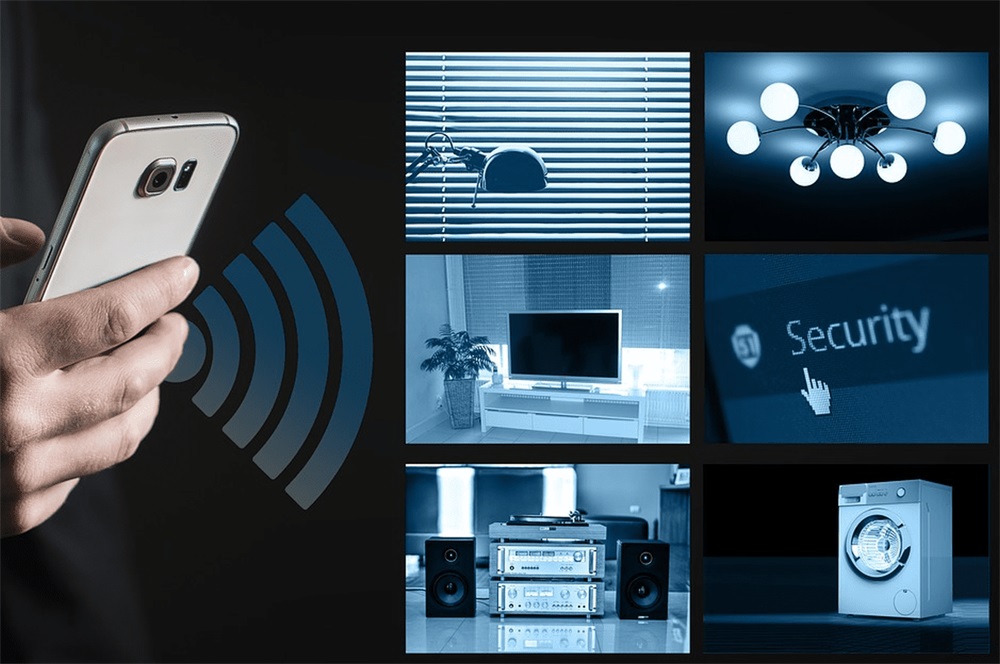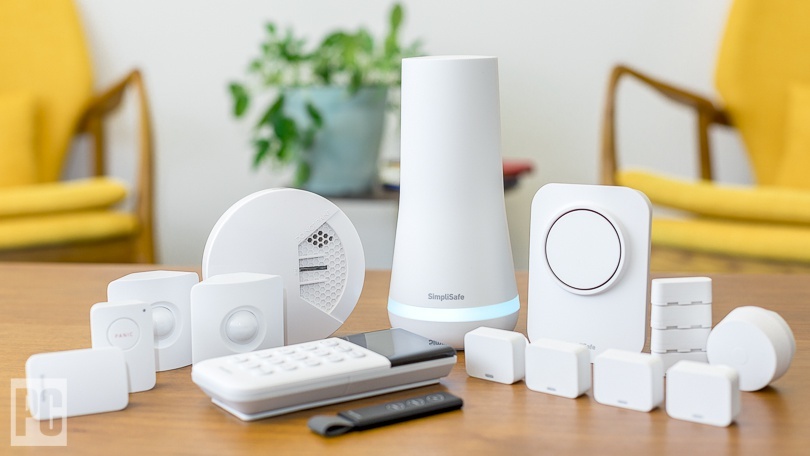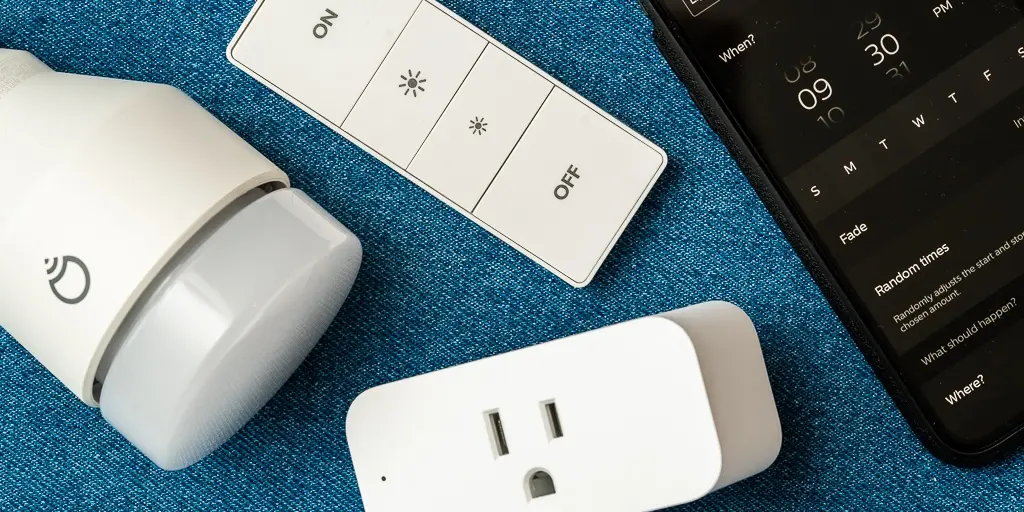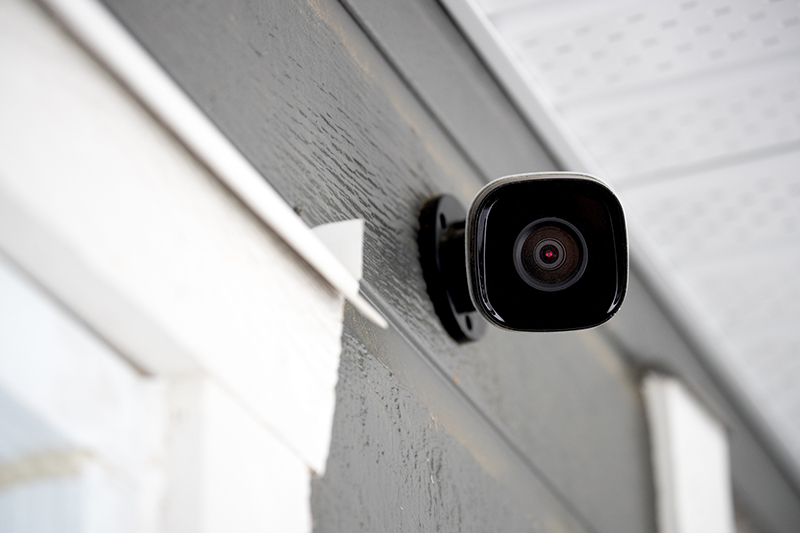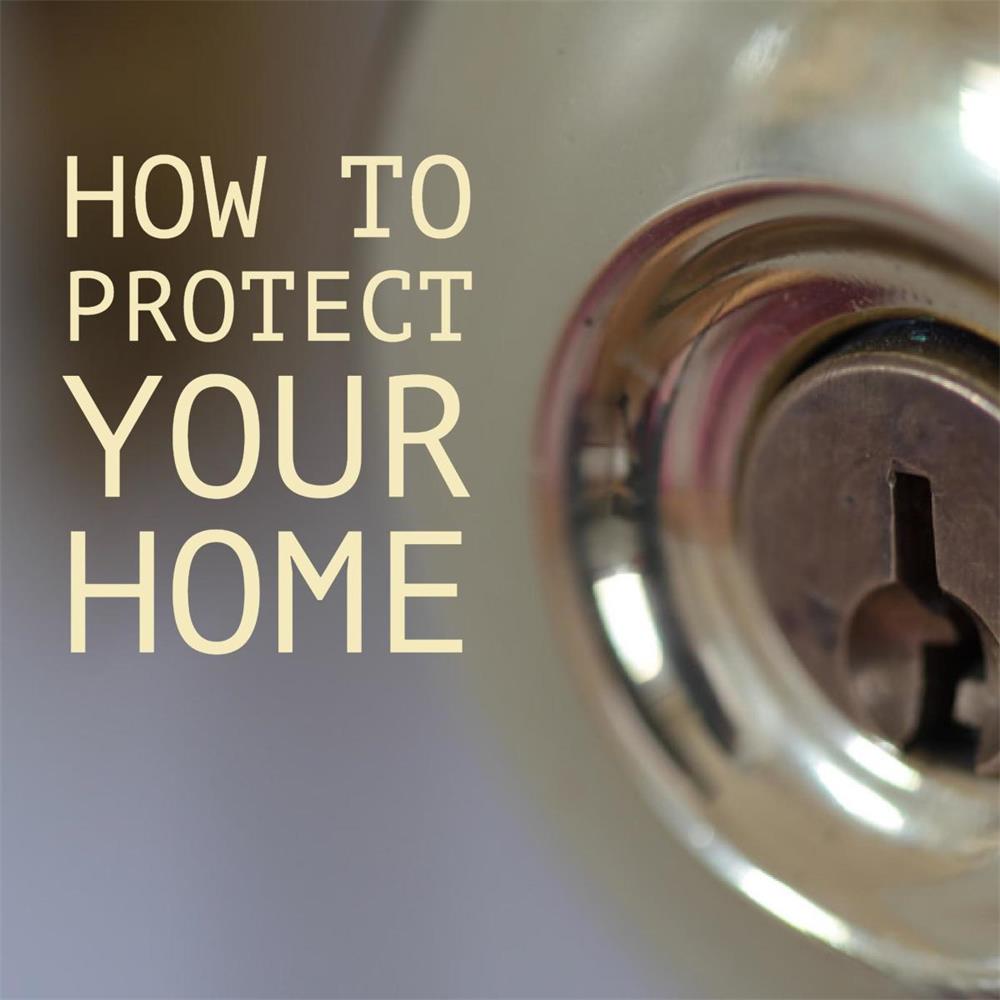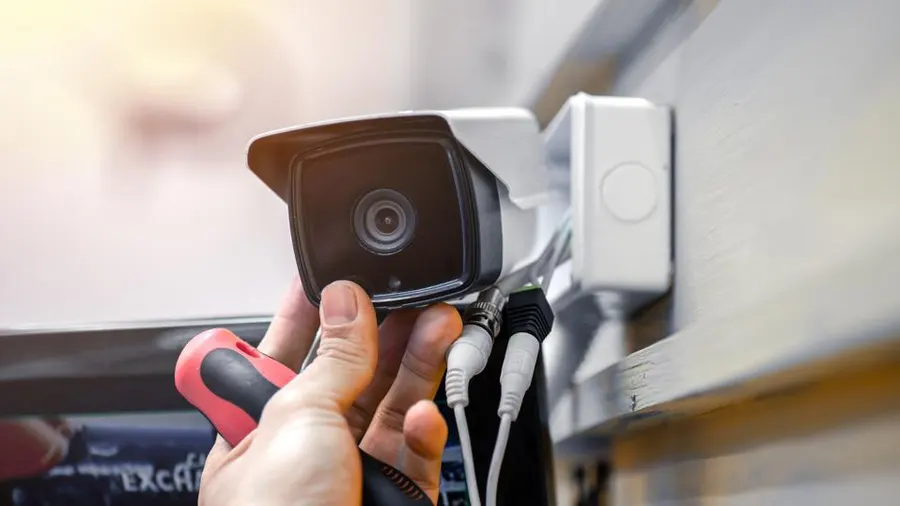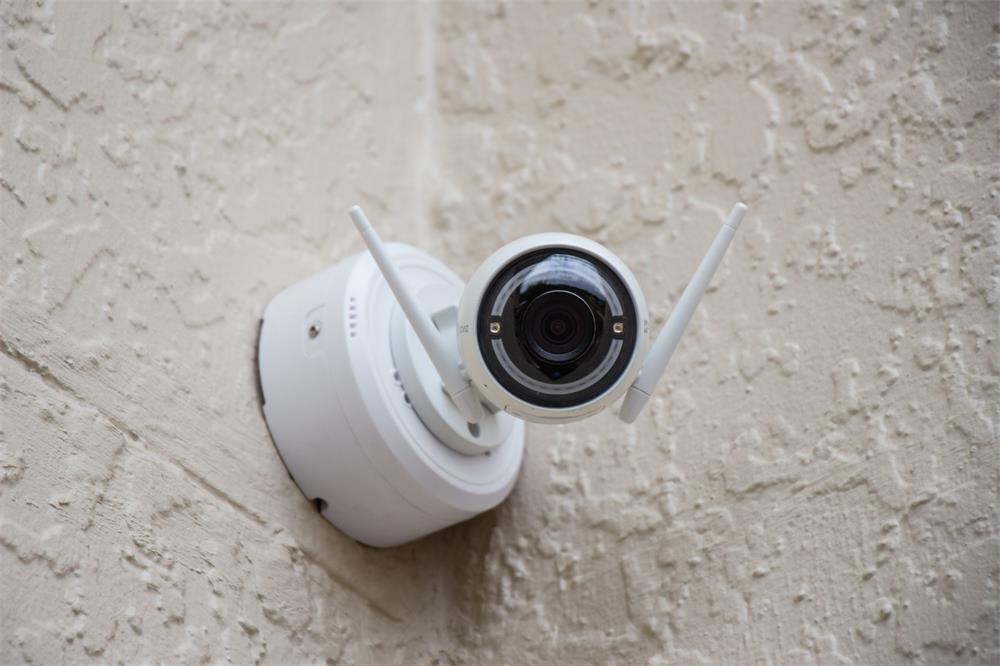Contents
- 1 The Rise of Smart Home Devices
- 2 The Need for Device Security
- 3 Examples of Recent Hacks
- 4 The Risks of Smart Home Devices
- 5 The Risks of Smart Home Devices
- 6 Best Practices for Securing Your Smart Home Devices
- 7 Additional Steps You Can Take
- 8 How to Secure Specific Smart Home Devices
- 9 How to Monitor Your Network for Suspicious Activity
- 10 The Importance of Regularly Backing Up Your Smart Home Data
- 11 Conclusion
The Rise of Smart Home Devices
In recent years, the popularity of smart home devices has skyrocketed. From voice-activated assistants like Amazon’s Alexa and Google Assistant to smart thermostats like Nest and Ecobee, these devices are becoming more prevalent in households across the world.
These devices are designed to make our lives easier by giving us greater control over our homes with just a few taps or voice commands. However, with this convenience comes potential risk: hackers can use these same devices to gain access to our personal information.
The Need for Device Security
As we continue to integrate these innovative gadgets into our daily routines, it is crucial that we understand how they work and take appropriate measures to secure them from potential cyber threats. Hackers have become increasingly sophisticated in their attempts to hack into smart homes and steal sensitive data such as credit card numbers or private conversations. Without proper security measures in place, your smart home device can become a gateway for cybercriminals looking for a way into your network.
Once they gain access through one device, they can then move laterally through your network and potentially cause significant harm. In this article, we’ll explore some best practices for securing your smart home devices from hackers so that you can enjoy the benefits of these technologies without sacrificing your privacy or security.
Examples of Recent Hacks
It’s important to understand the real-world consequences of not taking proper security precautions with your smart home devices. In 2019, a couple in Milwaukee had their baby monitor hacked by someone who was able to view their baby sleeping and even talk through the device’s speaker system. Similarly, in 2020, an Amazon Ring camera was hacked after its owner reused an old password that had been previously compromised on a different website.
The hacker was able to view footage from inside the family’s home and even communicate with them through the camera’s speaker system. These incidents serve as a stark reminder of the importance of securing your smart home devices from hackers.
The Risks of Smart Home Devices
Smart home devices are designed to make our lives easier, but they also come with inherent risks. These devices are connected to the internet, which means they’re vulnerable to hackers who can exploit vulnerabilities in their software or hardware.
Some common risks associated with smart home devices include:
- Data theft: hackers can use your smart device to access your personal information, such as credit card numbers or login credentials.
- Hacking other connected devices: once a hacker gains access to one device on your network, they may be able to gain access to other connected devices like laptops or smartphones.
- Surveillance: hackers can use cameras and microphones on smart home devices for surveillance purposes, potentially spying on you without your knowledge or consent.
- Ransomware attacks: in some cases, hackers may infect your smart home device with ransomware, which locks you out until you pay a fee.
In the next section, we’ll discuss best practices for securing your smart home devices and avoiding these risks altogether.
The Risks of Smart Home Devices
Smart home devices undoubtedly make our lives more convenient. However, they come with their own set of risks.
One of the biggest is the threat of hacking. If a hacker gains access to your smart home network, they could potentially control all your devices and compromise sensitive information.
One common way hackers target smart homes is through exploiting vulnerabilities in the software or firmware of devices. This is why it’s important to keep all your devices up-to-date with the latest security patches.
Failing to do so can leave you vulnerable to known exploits that can be easily leveraged by hackers. Another risk is the potential for weak passwords or using default login credentials.
Many people don’t realize that device manufacturers often use generic usernames and passwords that are easy to guess or find online. This makes it incredibly easy for hackers to gain access and wreak havoc on your network and data.
How Smart Home Devices Can Be Vulnerable
Smart home devices are designed to communicate with each other, as well as with other networks such as the internet, Bluetooth-enabled devices, and Wi-Fi networks. As a result, they are constantly sending and receiving data, which creates numerous entry points for would-be attackers. For example, if a hacker were able to compromise one device on your network – say a smart thermostat – they could potentially use that as a gateway into other vulnerable areas such as security cameras or door locks.
Furthermore, many smart home devices rely on cloud-based services for certain features or functionality. These services require you to enter personal information such as credit card numbers and email addresses which can be stolen in a data breach if not adequately secured.
Real-Life Examples of Hacked Smart Homes
There have been several high-profile cases where smart homes have been hacked in recent years. In 2019, a couple in Wisconsin had their Nest camera system hacked. The hacker used the camera’s speakers to speak to them and even played vulgar music through the device.
Another example is from 2018 when a hacker managed to gain access to a smart lock system and successfully unlock a person’s front door. The homeowner had no idea their lock system had been compromised until they received a notification of the unauthorized access.
These incidents serve as warnings for the need to take proper precautions when securing your smart home devices. With the increasing prevalence of these types of attacks, it’s not a matter of if but when someone will try to hack your devices if you don’t take adequate security measures.
Best Practices for Securing Your Smart Home Devices
As the popularity of smart home devices continues to rise, so does the need to secure these devices from hackers. Whether it’s a smart thermostat or a home security system, any connected device can be vulnerable to cyberattacks. Here are some best practices you can follow to ensure that your smart home is safe and secure.
Use Strong and Unique Passwords for Each Device and Account
One of the most important steps in securing your smart home is to use strong and unique passwords for each device and account. Avoid using common passwords such as “123456” or “password,” as these can easily be guessed by hackers.
Instead, choose a complex password that includes a combination of letters, numbers, and symbols. It’s also important to use different passwords for each device and account.
If one password is compromised, it won’t give hackers access to all your other devices or accounts. Consider using a password manager app that can generate and store strong passwords for you.
Keep Your Software and Firmware Up-to-Date
Keeping your software and firmware up-to-date is another crucial step in securing your smart home devices. Manufacturers often release updates that address security vulnerabilities or fix bugs.
By installing these updates, you’re ensuring that your devices are as secure as possible. Most smart home devices have an option to automatically update their software/firmware when new versions become available – enable this feature if available on your device.
Disable Unnecessary Features
Many smart home devices come with features that you may not need or use regularly – features like remote access from outside of the network, voice-enabled commands etc.. These features often have weak points where attackers tend to exploit them if left enabled unnecessarily even though they aren’t being used. It’s important to regularly review the features enabled on all of your smart home devices. If there’s a feature that you don’t use, disable it to reduce the potential attack surface.
Enable Two-Factor Authentication Whenever Possible
Two-factor authentication (2FA) is an extra layer of security that requires users to provide additional information beyond just a password. For example, you may be required to enter a code sent to your phone or email in addition to your password.
Most smart home devices offer some form of 2FA, so take advantage of it wherever possible. It can help prevent unauthorized access even if someone has obtained your password.
Secure Your Smart Home – In Conclusion
By following these best practices, you can significantly reduce the risk of cyberattacks on your smart home. Use strong and unique passwords for each device and account; keep your software and firmware up-to-date; disable unnecessary features on devices; and enable two-factor authentication whenever possible. These steps will help keep your smart home safe from hackers and ensure that you can enjoy all the conveniences that come with this technology without sacrificing security.
Additional Steps You Can Take
Use a virtual private network (VPN) to encrypt your internet traffic
One of the most effective ways to secure your smart home devices is by using a virtual private network (VPN). A VPN offers an encrypted connection between your device and the internet, which can prevent hackers from intercepting sensitive information such as usernames, passwords, and credit card details.
By encrypting your internet traffic, you can also protect yourself from various cyber threats such as malware and phishing attacks. To use a VPN for your smart home devices, you’ll need to install an app on each device or configure it on your router.
There are many VPN providers available that offer different features and pricing plans. Some popular options include NordVPN, ExpressVPN, and Private Internet Access.
Set up a separate guest network for visitors
If you frequently have guests over who want to connect their devices to your Wi-Fi network, it’s important to set up a separate guest network. This will isolate their devices from yours and prevent them from accessing any confidential information or files on your smart home devices.
Most modern routers come with a feature that allows you to create multiple networks with different security settings. To set up a guest network, simply log in to your router’s admin panel and follow the instructions provided by the manufacturer.
Be cautious when downloading third-party apps or using public Wi-Fi
Another way hackers can gain access to your smart home devices is through malicious third-party apps or unsecured public Wi-Fi networks. It’s important to be cautious when downloading apps from sources other than official app stores like Google Play or Apple App Store. These unofficial sources may contain malware or spyware that could compromise the security of all of your connected devices.
When using public Wi-Fi networks, avoid logging into any sensitive accounts like banking or email without using a VPN. Public Wi-Fi networks can be easily hacked, and any information you transmit on them could be intercepted by hackers.
Securing your smart home devices is crucial in today’s digital age. By following these additional steps, such as using a VPN, setting up a guest network, and being cautious when downloading third-party apps or using public Wi-Fi, you can minimize the risk of being hacked and ensure that your personal information remains safe and secure.
How to Secure Specific Smart Home Devices
The Importance of Securing Each Device Separately
When it comes to securing your smart home devices, it’s important to remember that each device is unique and has its own set of vulnerabilities. Take, for example, the Amazon Echo. This device can be vulnerable to attacks through the microphone and speaker, so it’s important to ensure that these features are turned off when not in use.
Additionally, you should change the default wake word and disable voice purchasing. Google Nest devices also have their own set of security concerns.
These devices can be vulnerable through their cameras and microphones. To secure them, ensure that you’re using a strong password for your account and enable two-factor authentication if possible.
It’s also important to regularly update the firmware on your Nest devices. Philips Hue light bulbs may not seem like a high-risk smart home device, but they too can be vulnerable to hacking attempts.
To secure them, ensure that you’re using a strong Wi-Fi password and regularly update the firmware on each bulb. Overall, securing each device separately is crucial for protecting your entire smart home network from potential hackers.
How to Monitor Your Network for Suspicious Activity
The Importance of Staying Vigilant
While taking preventative measures such as securing individual devices is important, monitoring your network for suspicious activity can help catch potential threats before they become a major problem. One way to monitor your network is by setting up alerts for unusual activity or login attempts on your accounts. You can also monitor your router’s logs or use software specifically designed for monitoring IoT (internet of things) networks.
Another option is implementing intrusion detection systems (IDS), which can detect unauthorized access or suspicious behavior on your network. Staying vigilant about monitoring your network may seem daunting at first, but it’s an important step in protecting your smart home devices from potential hackers.
The Importance of Regularly Backing Up Your Smart Home Data
Why You Should Be Prepared for the Worst
While taking preventative measures and monitoring your network can help prevent hacking attempts, it’s important to also be prepared for the worst-case scenario: a successful hack on your smart home network. Regularly backing up your smart home data can ensure that you don’t lose everything in the event of a hack.
This includes backing up configuration files, device settings, and even camera footage. One way to backup your data is by using cloud storage services such as Google Drive or Dropbox.
Additionally, some smart home devices even offer their own backup options built into their software. It’s important to regularly back up your data to ensure that you can quickly recover from any potential hacks on your network.
Overall, securing your smart home devices from potential hackers requires a combination of preventative measures, monitoring for suspicious activity, and being prepared for the worst-case scenario. By taking these steps seriously and staying vigilant about security practices, you can protect yourself and your family from potential cyber threats.
Conclusion
The Importance of Securing Your Smart Home Devices from Hackers
In a world where technology is increasingly integrated into our lives, it’s more important than ever to ensure that our devices are secure. The Internet of Things (IoT) has brought us an incredible range of smart home devices that can make our lives easier and more convenient.
From thermostats to security cameras, these devices are designed to automate and streamline our homes in ways we never imagined possible. However, with this convenience comes risks.
These devices are connected to the internet, which means that they can be accessed by hackers who want to exploit vulnerabilities in the system. The consequences of a hack can be devastating – from stolen personal information to physical harm if someone gains control over your thermostat or home security system.
Encouraging Action and Implementing Best Practices
The good news is that there are steps you can take to protect yourself from smart home device hacks. By implementing best practices such as strong passwords and regular updates, you can reduce your risk of being targeted by hackers. It’s important not just to read about these best practices but also implement them as soon as possible.
Go through the list one by one and make sure all your smart home devices meet these standards. Remember: securing your smart home devices isn’t just about protecting yourself; it’s about protecting everyone on the internet.
When hackers gain access to an unsecured device, they can use it as a launching pad for attacks on other networks and systems. Take action today – secure your smart home devices using these best practices before it’s too late!

